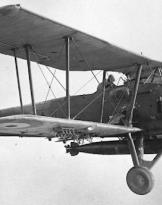When we talk about war pilots, we often end up in the rhetoric of those who, despite having been thrown into the Total War, decided to remain attached, at times naively, to that spirit of chivalry which elsewhere could not be exhibited with the same frequency.
For whim or possibility, there have been numerous cases of cavalry among the pilots, and yet another example of the commendable conduct of these 'winged gentlemen' has emerged from some recently discovered documents preserved in the archive of Lieutenant Charles Cotterill from title 'The Sporty Huns' (which we could easily translate into 'Sports Crucies'). In his small archive, started in the 1929, it is revealed how some German pilots of the Luftstreitkräfte (aeronautics of the German Empire) risked their lives several times during the First World War to inform the families of two pilots of the RFC (Royal Flying Corps ) that dear ones, shot down near enemy lines, were safe and safe.
In some documents found by the great-grandchild of Lieutenant Cotterill, also an officer in the RFC during the First World War, Cotterill writes: '5 Monday March 1917. Lieutenants Floyer and Palmer, who took off from our aerodrome for a reconnaissance flight along the Turkish lines between Sinai and Syria, were shot down by the fire of Turkish machine guns. After a forced landing for the reported damage both were captured (...) the following Thursday, 8 March 1917, an airplane bearing the Turkish insignia, which was later discovered to be piloted by a German, boldly approached our aerodrome challenging the fire of machine guns to throw on our heads that proved to be a package containing some letters in which Floyer's and Palmer's own announced they had been taken prisoners.'
 Following: "Last Sunday, 18 March 1917, another Turkish plane appeared on our aerodrome exposing itself to the fire of our machine guns this time. The pilot, who we later discovered was a Hun, made a wide circle on our heads and threw what we thought was a bomb (...) was yet another bag with other messages from the two airmen kept captive. Before heading to the Turkish lines this time the pilot leaned out of the cockpit to give us a sign of greeting (...) The package contained, in addition to the letters, a photo of our comrades, amicably portrayed with the remains of their plane between German and Austrian officers. ' (...) The Cruccis had marked the photograph showing that the No.1 cricket had made the sortie of 8 in March, while the No.2 cricket was the one that had completed the second sortie: the one that had delivered us 'photography."
Following: "Last Sunday, 18 March 1917, another Turkish plane appeared on our aerodrome exposing itself to the fire of our machine guns this time. The pilot, who we later discovered was a Hun, made a wide circle on our heads and threw what we thought was a bomb (...) was yet another bag with other messages from the two airmen kept captive. Before heading to the Turkish lines this time the pilot leaned out of the cockpit to give us a sign of greeting (...) The package contained, in addition to the letters, a photo of our comrades, amicably portrayed with the remains of their plane between German and Austrian officers. ' (...) The Cruccis had marked the photograph showing that the No.1 cricket had made the sortie of 8 in March, while the No.2 cricket was the one that had completed the second sortie: the one that had delivered us 'photography."
The archive of Lt. Cotterill, which will soon be auctioned off, contains more than 800 photographs of the time, when it held the role of observer in the RFC. There are numerous photos of photographic surveys carried out on Egypt, aerial views of the enemy trenches, and photos of his companions, first at the Cheshire Regiment and then in the Royal Flying Corps. Many postcards of Ypres and all the honors and insignia obtained in his military career, showing how he continued to fly as an RAF observer even during the second world war.
In the war of the 1914-1918 the pilots of the respective factions were not equipped with parachutes, the planes were of wood and canvas and had no countermeasures in case of emergency. Aviators often carried with them a gun, to kill themselves if the plane caught fire with them still conscious on board. In the Middle East the pilots were subjected to further risks of a purely geographical nature: a mechanical failure would have forced them to land with a good chance in a desolate land of thousands of kilometers of extension that would have left them no chance of escape.
This is why this is not rhetoric. These gentlemen of the skies, 'Sporty Huns', showed an enormous dose of courage in making this gesture worthy of the best chivalrous tradition, imprinting it in history along with all the others, who, despite the increasingly acute antagonisms, persist from both leave for the duration of the Great War.













